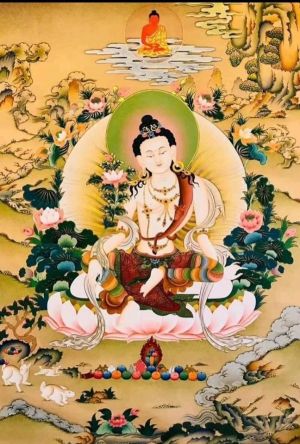China: Information on the main differences between Chinese Buddhism and Tibetan Buddhism
According to China A Travel Kit,
[t]he cornerstone of Buddhist philosophy is the view that all life is suffering. Everyone is subject to the traumas of birth, sickness, decrepitude and death; to what they most dread (an incurable disease or an ineradicable personal weakness), as well as separation from what they love. The cause of suffering is desirespecifically to the desires of the body and the desire of personal fulfilment. Happiness can only be achieved if these desires are overcome, and this requires following the 'eight-fold path.' By following this path the Buddhist aims to attain nirvana, a condition beyond the limits of mind and feelings; a state of bliss (Buckley, 1988, 51).
The source continues that a Chinese monk named Xuan Zang travelled to India and returned with Buddhist scriptures which were then translated from the original Sanskrit to Chinese (Ibid.). At one stage Buddhism split into two major schools: Hinayana and Mahayana (Ibid.). The Mahayana school became the Buddhism of, among other countries, China and Tibet (Ibid. 52). Mahayana Buddhism is "replete with innumerable heavens, hells and the description of nirvana. Prayers are addressed to the Buddha, combined with elaborate rituals" (Ibid.).
According to a professor of religious studies at McGill University, Montréal, adherents of both Chinese and Tibetan Buddhism believe that everything is impermanent and constantly changing and, therefore, there is a general dissatisfaction with life (28 Jan. 1993). Tibetan Buddhism, in particular, is a mixture of Indian and Chinese Buddhism (Ibid.). It is different from Chinese Buddhism in that it is influenced by the native religion of Tibet and the Bon religion (Ibid.). The Bon religion believes in good and bad spirits (ie., gods and demons) and that these spirits are present everywhere (Ibid.). Magic is a strong element of this religion (Ibid.). According to the professor, another essential difference between Chinese Buddhism and Tibetan Buddhism is that in Tibetan Buddhism the Dalai Lama is both a religious and a political leader. In Chinese Buddhism, although some schools might have a spiritual leader, such a leader has no political significance (Ibid.).
According to a professor of philosophy at the University of Victoria, Tibetan Buddhism is more ceremonial than Chinese Buddhism, which is more simple and sparse (27 Jan. 1993). Tibetan Buddhism is also more hierarchical in its structure, having the Dalai Lama at the top of hierarchy as the main religious leader (Ibid.). Chinese Buddhism, on the other hand, has no recognized top authority and is more decentralized (Ibid.).
According to an Asia Watch report entitled Merciless Repression Human Rights in Tibet, Tibetan Buddhism
may well pose an ideological challenge to the orthodoxy upon which the political foundations of the People's Republic of China are based; and its nationalistic potential is clearly perceived by the authorities as posing a dire threat to the legitimacy of Chinese rule in Tibet (1990, 67-68).
Since the implementation of martial law, the long-standing governmental interference in religious affairs in Tibet has been further intensified (Ibid., 70-71). The source concludes that any attempts from within the monastic community to extend its activities into the realm of dissenting politics is rewarded by harsh and violent suppression and by political imprisonment or worse (Ibid., 71).
For additional or corroborating information please refer to the attached materials.
References
Asia Watch 1990. "Merciless Repression" Human Rights Abuses in Tibet. New York: Human Rights Watch.
Buckley, Michael, et al. 1988. China A Travel Survival Kit. 2nd ed. Berkeley: Lonely Planet Publications.
Professor, Department of Philosophy, University of Victoria, Victoria. 27 January 1993. Telephone interview.
Professor, Department of Religious Studies, McGill University, Montréal. 28 January 1993. Telephone interview.
Asia Watch 1990. "Merciless Repression" Human Rights Abuses in Tibet. New York: Human Rights Watch.
Buckley, Michael, et al. 1988. China A Travel Survival Kit. 2nd ed. Berkeley: Lonely Planet Publications.
Buckley, Michael and Robert Strauss. 1986. Tibet A Travel Survival Kit. 1st ed. Berkeley: Lonely Planet Publications.
Mews, Stuart, ed. 1988. Religion in Politics. Chicago: St. James Press.
